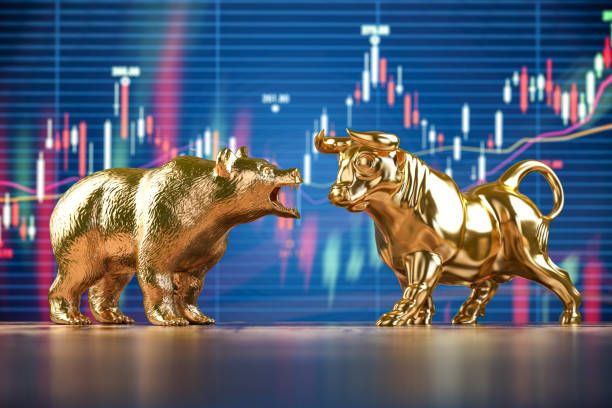How to trade using a trading account
Written by Dev Sethia
4 min read | Updated on November 11, 2025, 15:55 IST

How to trade using a trading account
If you are going to be involved in any financial exchanges, you'll need a trading account. A trading account helps exchanges identify their trading entities and verify the involved transactions.
All trades are conducted online, meaning each investor will require a trading account to buy and sell shares, mutual funds, commodities, derivatives, and other financial instruments.
Trading Account vs Demat Account
A trading account is for buying and selling financial instruments, but the actual investments remain in a digital depository referred to as a demat account.
A demat account acts as an e-locker to secure your financial assets. Most investors open a demat account in addition to their trading account to help manage their investments more efficiently.
Choosing the Right Broker
Investors can set up a trading account with any independent or bank-affiliated broker that is registered with the appropriate financial exchange. When picking, you might consider:
Services offered
Some brokers merely provide a trading service, while some brokers also offer investment advice, research, or other market analysis.
Brokerage charges
Different brokers may charge differing rates and brokers may charge fees based on the number of trades, value of the trade, or make investment decisions based on a minimum account balance.
Service quality
You may want to research to determine which broker is providing a service that meets your needs at a cost that is acceptable.
Application Process
Opening a trading account is a simple process. Investors are able to apply online through a brokerage website or can speak to the broker directly. The application consists of:
Once processed, the trading account will be established along with the demat account if you do not already have an existing one. Login details for the e-trading platform should be sent to the investor within a few days.
Making a Trade
When you start trading, you will send cash from your linked bank account to your trading account. Investors can place different types of orders:
Intra-day orders
Buying and selling stocks in the same trading period.
Delivery orders
Buying stocks to hold for any time frame.
When placing an order, you indicate the type of order, price, and quantity of shares or units. Another market participant will then accept the buyer's offered price, the trade will be executed, and cash and shares will be exchanged.
Brokers may also provide margin trading, where they will lend the investor some of the funds for short-term trades, especially intra-day trades. Investors can trade something other than equity as well, such as commodities and derivatives.
You need to have a trading account and a demat account to be able to trade in financial instruments. You can open a trading account with a regulated broker and will need to submit KYC documents. You will also need to link a bank account to facilitate deposits and withdrawals.
Once completed, you will be able to place orders with specified prices and volumes and will be able to trade financial instruments seamlessly.
FAQs
What is a trading account?
If you wish to buy or sell an instrument in the financial markets, such as shares, mutual funds, commodities, or derivatives, then you need a trading account.
What is the difference between a trading account and a demat account?
A trading account is necessary for buying and selling a security, while a demat (dematerialised) account holds the security electronically, much like a locker holds your valuables.
How do I open a trading account?
To open a trading account, you need to reach out to a registered broker or bank subsidiary and open the account online. Generally, this means filling out an account opening form with your requested KYC details and linking the account to your bank.
What documents do I require to open a trading account?
To open a trading account, you need to provide identity proof (PAN card, Aadhaar), address proof (passport, voter ID, driver’s license), and your bank account details, usually in the form of a cancelled cheque, to link your bank account.
What should be the criteria for selecting a broker?
Select a broker based on the services offered, brokerage charges and the quality of service. Some brokers offer research and investment advice, while others offer low-cost trading. Be sure that the broker is registered with the stock exchange.
How does trading work through a trading account?
Once the funds are transferred to your cash account from your bank account, you can place either intra-day or delivery orders by specifying the price and the quantity of the shares. Your trade is executed.
What is margin trading and how does it work?
Margin trading provides investors with the ability to finance a portion of the total value of a trade by borrowing from the broker, typically for short-term or intra-day trades. Margin trading can be extremely beneficial to boost purchasing power, but it also increases risk due to leveraging.
About Author
Dev Sethia
Sub-Editor
a journalism post-graduate from ACJ-Bloomberg with over three years of experience covering financial and business stories. At Upstox, he writes on capital markets and personal finance, with a keen focus on the stock market, companies, and multimedia reporting. When he’s not writing, you’ll find him on the cricket pitch
Read more from Upstox
Upstox is a leading Indian financial services company that offers online trading and investment services in stocks, commodities, currencies, mutual funds, and more. Founded in 2009 and headquartered in Mumbai, Upstox is backed by prominent investors including Ratan Tata, Tiger Global, and Kalaari Capital. It operates under RKSV Securities and is registered with SEBI, NSE, BSE, and other regulatory bodies, ensuring secure and compliant trading experiences.